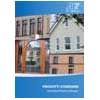Georgian bar grilles
| AL7 Meipa Srl manufacture using a range of different assembly methods enabling us to select the optimal method for each particular design requirement. The methods available are as follows: | |
 | Square cut & key The most common and fastest method of grille assembly. Each piece of bar is square cut tolength and the adjacent pieces are held together with a nylon key. Only a saw and drill with measuring jig or staple table are required to produce this type of grille. However rigidity can be an issue and rubber grommets (or buffers) are commonly used in the keys to prevent rattling. This method is less suitable for special finishes where the nylon keys need to be colour matched to the profile. |
 | Mitred joints Each piece of bar is cut with a 45° chamfer at the joint end. The 4 adjacent bars are then fitted over a key which holds them at 90° to each other and is hidden inside the profile. This system allows any colour of profile to be assembled using the same key but can be time consuming to manufacture and does not produce a particularly rigid grille. An accurate saw capable of cutting at 45° and drill with measuring jig or staple table are required to produce mitre jointed grilles. |
 | Milled joints Grilles are assembled using continuous mullions which are drilled or notched at the transom position. The end(s) of each transom bar are machined to fit precisely over the mullion. A pin through the hole in the mullion mates with connectors hidden inside the transoms. This type of grille takes longer to produce than the basic square cut & key system but results in a very rigid grille which does not require buffers. Any issue with colour matching of keys is also eliminated. In addition to a saw and drill with measuring jig, a chamfering saw and special purpose milling machine are required for manufacturing grilles in this way. |
 | Half lap joints Grilles are assembled using both continuous mullions and transoms. Both profiles are notched out at the joint position to half their depth. The mullion and transom can then be nested into each other. A clip on cap is employed to cover the joint. Production of this type of grille requires a saw, drill with measuring jig or staple table and special purpose notching device. A grille manufactured in this way is more rigid than the square cut equivalent. |

